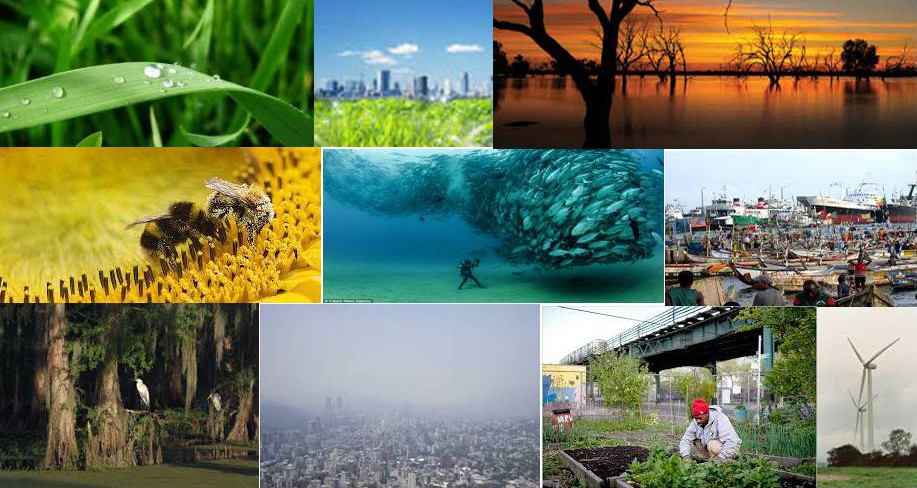Please pass the word to fellow students who may be interested! Tuesdays, 11:30 – 2:00 PM, M -301
Interdisciplinary course

dvancements in Renewable Energy
Composting and the Environment-Economy
Economic and Environmental Benefits of Farmers Markets
Graywater_TreatmentF(Afzal_Sergey)
Green Roofs and Rooftop Gardening
Sustainable Hotel Practices – IHG Approach
Unhealthy Eating Habits and Consequences
What Makes a Hotel Green Certified
https://docs.google.com/presentation/d/12Q_ZX0GVX6ohm-CcOeogudp3yg55ct1zkxN0Z_ydYzY/edit#slide=id.p3
To prepare for the in-class project on Wed., please read the following articles, “Rebuild by Design” article which describes several coastal renewal projects that are proposed for the New York metropolitan area. We reviewed one of these proposals, “The Big U” earlier in the semester. It is one among many that are planned for areas in and around New York City that are designed to provide protection from another major potentially damaging storm. There is a link to a recent article with a rendering of what the “Big U” would look like in a section of Battery Park City in Lower Manhattan.
There are links in the article that provide more detailed information on each of these projects. You will be asked to choose to focus on one of the following for the in class project: 1) “The Big U” (Manhattan)
2) “Living Breakwaters” (Staten Island)
3) “Living with the Bay” (Long Island)
4) “Blue Dunes: The Future of Coastal Protection”
5) “Hunts Point Lifelines” (Bronx)
The links to following two articles provide details on these projects. Please either print a copy or (if you have a tablet or laptop, bring this to class so that the readings and the links to additional information that they provide can be accessed.
A set of questions to be answered for this project will be distributed in class.
http://www.rebuildbydesign.org/winners-and-finalists/
To prepare for the in-class project on Wed., please read the following articles, “Rebuild by Design” article which describes several coastal renewal projects that are proposed for the New York metropolitan area. We reviewed one of these proposals, “The Big U” earlier in the semester. It is one among many that are planned for areas in and around New York City that are designed to provide protection from another major potentially damaging storm. There is a link to a recent article with a rendering of what the “Big U” would look like in a section of Battery Park City in Lower Manhattan.
There are links in the article that provide more detailed information on each of these projects. You will be asked to choose to focus on one of the following for the in class project: 1) “The Big U” (Manhattan)
2) “Living Breakwaters” (Staten Island)
3) “Living with the Bay” (Long Island)
4) “Blue Dunes: The Future of Coastal Protection”
5) “Hunts Point Lifelines” (Bronx)
The links to following two articles provide details on these projects. Please either print a copy or (if you have a tablet or laptop, bring this to class so that the readings and the links to additional information that they provide can be accessed.
A set of questions to be answered for this project will be distributed in class.
http://www.rebuildbydesign.org/winners-and-finalists/
Read the following two articles and post a response to one of the two questions that follow. You must complete your post by Tuesday AM, April 14.
Greening-the-Gross-Domestic-Product
(1) In “Voices: Greening the Gross Domestic Product,” Garrett C. Groves and Michael E. Webber point out that policy makers are often pressured to choose policies that prioritize either the economy or the environment. Groves and Webber argue that this is a false choice – that policy makers should prioritize both. What are the problems with the way in which Gross Domestic Product is currently measured that make this a challenge?
(2) In “The GDP Myth: Why Growth isn’t always a good thing,” the authors cite several sources of growth that have had negative impacts on economic growth. Identify one of the reasons they site and explain why this source of growth is actually harmful to the economy.
_________________________________________________________________________________________________ Optional extra credit assignment (for those who wish): answer the following question in a typed one-page short essay. It should be submitted by April 29.
According to Rowe and Silverstein, the assumption about GDP growth among most economists is that “It makes no difference where the money goes, and why. As long as the people spend more of it, the economy is said to ‘grow.'” Thinking back to earlier class discussions about the environmental consequences of unplanned, unrestricted growth for its own sake, what are some of the problems with this view of growth and why?
1. Read article, “Sustainable Lifestyles and the Quest for Plenitude: Case Studies on the New Economy,” by Juliet Schor and Craig J. Thompson, eds. 2014 and come prepared for a discussion of the reading and the presentation by guest lecturer, Prof. Diana Mincyte (Sociology). Thompson and Press_CSA_ Practicing Plenitude 2014
2. Preliminary annotated bibliography due (3 sources, minimum) on Wed. April 1.
Please read chapter II – Understanding the current food system
in the context of climate change — major components and drivers
Achieving food security climate_food_commission-final-mar2012
Please read the two short articles here for Wednesday’s class.
A Vision faces and Environmental Test
Tourism and its environmental impact on the D.R. coastline